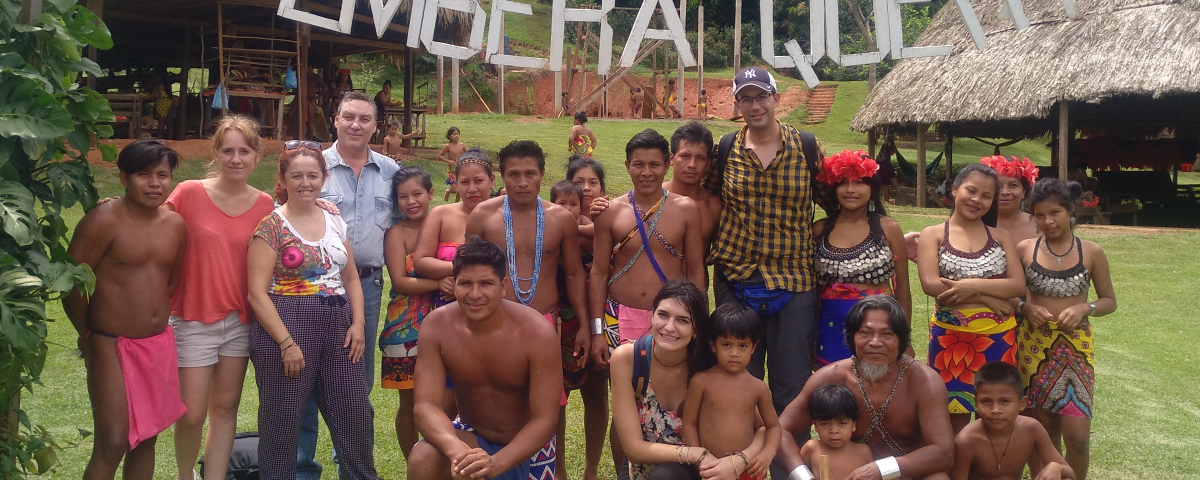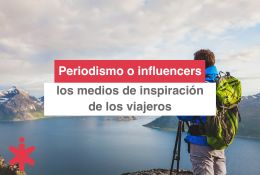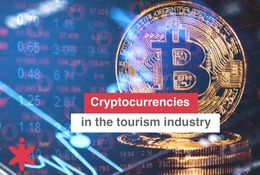Ethnic Tourism: Preserving the Roots Beyond the Show
Ethnic Tourism: Preserving the Roots Beyond the Show

Workshop + Round Table: 25M – The new GDPR, from business to cybersecurity in the tourism industry
15/06/2018
San Fermin or the Importance of Cultural Events in Tourism
12/07/2018Ethnic Tourism: Preserving the Roots Beyond the Show

The UNWTO (World Tourism Organization) defines ethnotourism as “the visit to places of their own or ancestral origin. It consists of visits motivated by the desire to reconnect with their roots, either in the places where he spent part of his life or those where his ancestors lived.”
Ethnotourism, therefore, is a type of tourism that respects the values of a community and their natural, cultural and social environment allowing the exchange of experiences and where visitors have a truly participatory attitude in their travel experience. Local communities offer visitors an opportunity where they share their traditions and customs, this benefits the locals in a way that allows them to preserve their cultural elements and gain recognition for their identity.
What is peculiar about this type of tourism? It is the members of the community who present their cultural identity to the visitors and the tourist activity taking place in the community’s own territory, leading to the revitalization of culture and strengthening of identity, through the encounter and intercultural dialogue. Among these characteristics it is important to mention that the ethnic tourism has a point of contact but also some difference with the indigenous tourism. Culture is a common point, however, what makes the difference is the indigenous’ control of initiatives and companies.
As indicated by Magdalena Morales González, in “¿Etnoturismo o turismo indígena?”, ethnotourism emphasizes the activities and benefits of users or tourists, while indigenous tourism emphasizes the participatory construction of ethnic groups to offer a lodging service, food, specialized guides and cosmogonic practices, whose essential characteristics are part of the cultural identity. Indigenous tourism, therefore, is understood as the activity where the indigenous communities offer the visitor the opportunity to share their traditions and customs with the purpose of an integral and sustainable community development.
Today, a vast majority of tourist destinations who are aware of the interest of tourists for such experiences, market different packages and activities to witness the local reality that many of us seek to experience when traveling.
I am one of those who understand different cultures, promotes cultural enrichment among people, understand their contact with the environment and mother earth, how they organize themselves and above all what they expect from the future, all these elements are a fundamental part of any trip I make.
Sometimes, the line that separates reality from fiction is extremely thin. I recently read a few criticisms that questioned whether this type of tourism really helps these ethnic groups. The key questions were: how these communities really live when the tourists leave? What part of their lifestyle is real and what part has become a reality show?
It was at this point, when I inevitably remembered one of my own experiences with this type of tourism. Some time ago I was returning home after my last group trip to Panama. Stating that I liked this experience is not enough. Land of beautiful landscapes and hidden gems, but what makes all even more fascinating is their people. The people in general and the Embera Quera community, in particular.
The Embera Quera are one of the 7 indigenous communities that exist on the isthmus and in recent years they have opened to share their culture, traditions and history with those who want to get close to know it.
During our trip, we shared a full day with this community. Getting to the community itself was an adventure. We had to cross the Gatun River in a small boat amidst overwhelming greenery.
Once we reached there, they welcomed us with their signature music and dance. They explained to us the reason for their unique identity, after which we dined with the community and ate delicious battered fish freshly acquired the same morning from the river Gatun. We then went on a private walk through the plantations that have medicinal value, the school and we talked to the local about life in general, a lot.
The leader of the community told us that they could perfectly live in the city, but they did not want to. Reason being, they simply felt the city is not made for them.
His life is in the Panamanian jungle, away from the noise of the big city, with the Gatun River as an indisputable source of life and community…. It does sound good, doesn’t it?
But then, wouldn’t it be better to live this way aside from the cameras and organized tours? Yes, they definitely agreed and went on to say that this is what they have always done, but tourism is an important source of income for them. An income for those who buy materials to build their houses, the fabrics with which they weave their suits and materials to build sledges to access the boats that allow them to travel and move around the area and to us, the tourists, to reach them. In short, tourism is an important part of the development and continuity of these communities and here, in Panama, is where I’ve been able to really see it.
Over the past few years, I have been fortunate to share time with different local communities. All the experiences have been great, but the feeling while leaving has not been the same in all of them. The humility and warmth of the Embera Community, their way of caring for and protecting their culture is simply admirable. The pride they feel in showing you their land and their work, their customs and their way of life, makes them endearing people. This is something that we will only know if we share enough time with them, becoming an active part of their community.
We must not forget that these communities are part of the material and immaterial heritage of the destination they are a part of. These local communities and the natural heritage form an inseparable binomial. Hence it is very important for the local governments and other key actors to integrate these ethnic groups to take care of and protect their own culture and maintain identity of a destination.
There is still much to be done, and as Magdalena Morales González has explained in “¿Etnoturismo o turismo indígena?”, “This participative construction of diverse indigenous people is a constant process of elaboration. It is a starting point to continue forging other aspects that allow them to redefine, specialize and become certified as micro-entrepreneurs in the tourism sector. There is still a myriad of tasks to be considered: those oriented towards conceptual precision, technical and operational work, training for certification, basic legal knowledge and links with official bodies for the development of their administrative tasks.”
So, could we still consider this as a type of tourism? Yes, but this type of tourism will always be associated to inclusion, sustainable development and as a tool for the conservation of cultural diversity and richness. Let’s say it is an integral part that helps keep customs and traditions alive. This, should be our goal as travelers and as the main actors in the industry, one that is dynamic and fast growing.
Our duty is to preserve the wealth and take care of the beauty of the different customs. Sensitizing respect and perpetuating their cultural identity. Always.

 All the news
All the news  Back to newsroom
Back to newsroom

